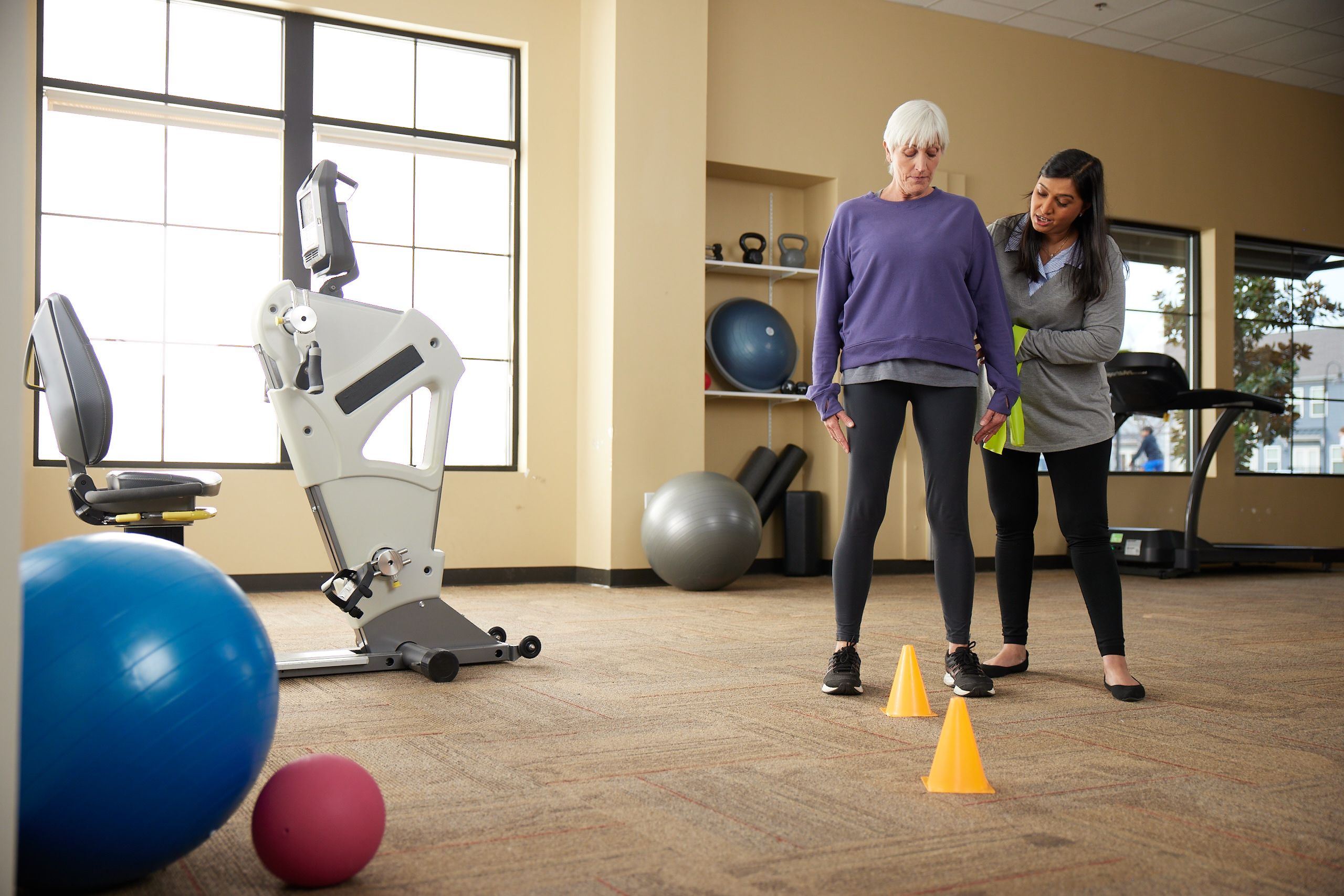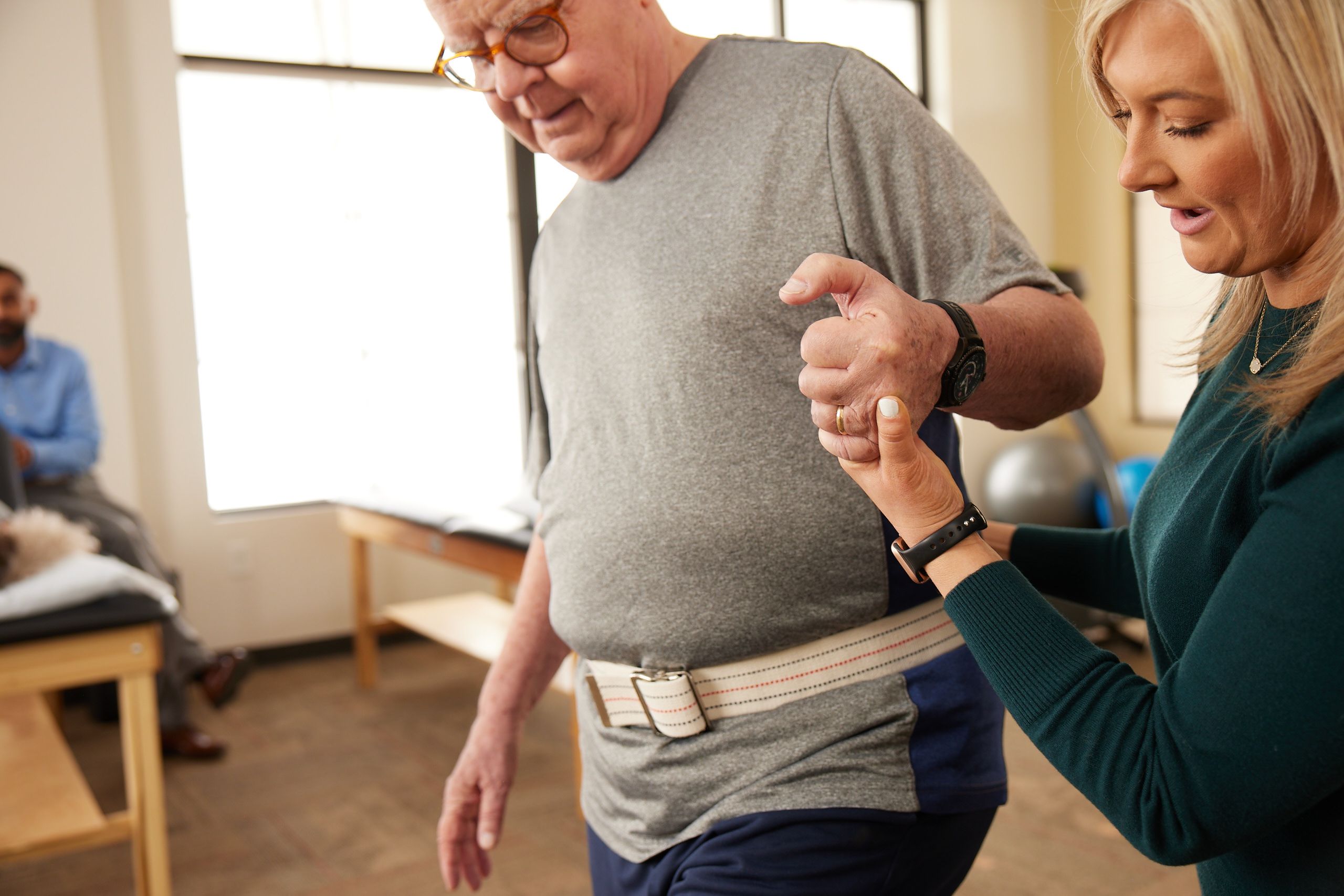Assess Your Fall Risk with a Fall Prevention Assessment
Request Your Free Fall Prevention Assessment
Fill out the form below to request your fall prevention assessment at one of our participating locations.

See The Fall Prevention Screen in Action
See how we evaluate balance, gait, and strength during a fall prevention screen.
Adults Should Schedule a Fall Risk Screen
The American Geriatrics Society recommends that all adults aged 65 and older be screened for falls. The Journal of Geriatric Physical Therapy, in a review of 33 other studies, identified 17 independent contributing factors in fall risks for “community-dwelling” older adults. It found a “significant interaction” between risk factors and a patient’s function level.
If you notice you are slowing down, keeping your eyes on the floor or lacking confidence, these are all signs your balance may be affected. Balance symptoms can appear well in advance before a fall occurs. The more risk factors a person has – older people that have fallen typically have two or more – the greater the chance of falling. Fortunately, while factors such as advanced age or a history of falls can’t be changed, many more can be modified to assist in fall prevention.


The Benefits of Physical Therapy for Fall Prevention
Physical therapy is one piece of the fall prevention puzzle. And it’s an important one. The American Physical Therapy Association has compiled a lengthy list of research studies that confirm the benefits of physical therapy for reducing the risk of falls and injuries from falls for older adults. Every adult should know their own risk of falling and take steps to remain active, strong, and injury-free.
A recent study by The Moran Company highlighted the benefits of physical therapy following a fall found:
- Physical therapy users were 50% less likely to visit the emergency room or be hospitalized for a follow-up injury in the 6 months following their initial fall.
- Individuals remained less likely to visit the ER or be hospitalized for a follow-up injury in the 7 to 18 months post-fall.
- Physical therapy users were less likely to use opioids for the 6 – 18 month post-fall period.
What To Expect
If fall risk is identified, a formal physical therapy program will address mobility issues such as walking speed, balance, proprioception, strength, flexibility, posture, and pain. The goal of physical therapy is to improve function and improve safety with daily activities.
Every patient is carefully evaluated, and a custom physical therapy treatment plan is created based on their individual health concerns and health goals.
